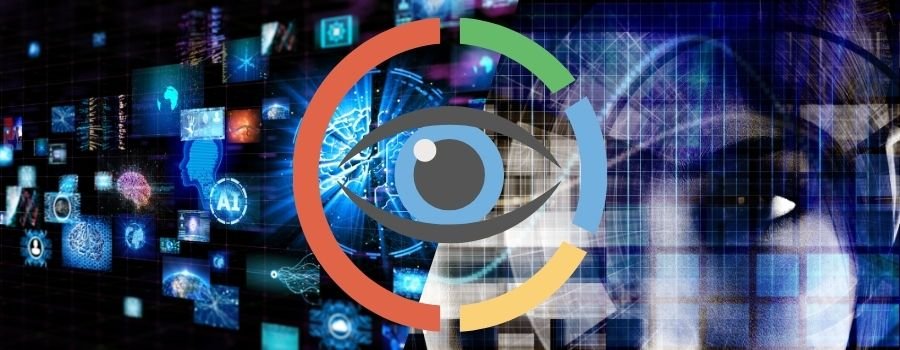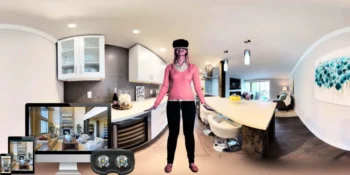With the advancement of modern technology, visual intelligence has revolutionized, providing us with new ways to interact with and understand the world around us. This article discusses the importance of visual intelligence, how the technologies are revolutionizing it, its applications, and its limitations.
Why is Visual Intelligence Important?
Visual intelligence, the ability to understand and interpret visual information, is essential to our daily lives. We rely on it to navigate our surroundings, identify objects, and interpret facial expressions. Below are some of its important functions in the modern world.
Efficient communication
In the digital age, people are constantly bombarded with vast amounts of information, making it challenging to process and retain all of it. Visuals, such as images, videos, and infographics, can convey complex information quickly and effectively, allowing individuals to comprehend and retain information more easily. Visual intelligence enables people to communicate and understand complex ideas, enhancing communication and collaboration in various industries.
Improved problem-solving
Intelligence technology allows individuals to analyze and interpret data more effectively, leading to more efficient and effective problem-solving. It enables people to identify patterns and connections that may not be apparent through other methods, leading to more accurate and informed decision-making.
Innovation and creativity
Visual intelligence can inspire creativity and innovation. It allows individuals to see things from different perspectives, explore new possibilities, and develop new ideas that may not have been possible through other methods. With the growing demand for visual technology skills in various industries, individuals with a strong skill set are highly sought after.
Personalization
With the increasing use of data analytics and machine learning, intelligence technology can personalize individual experiences. For example, e-commerce platforms can use visual intelligence to personalize product recommendations based on individual preferences and purchase history.
How is Revolutionizing Visual Intelligence?
Modern technology has led to significant advancements in visual intelligence. Artificial intelligence (AI), machine learning, computer vision, and other modern technologies have revolutionized the field. These technologies allow machines to process and analyze visual information faster and more accurately than humans.
Advanced data visualization
Modern technology has revolutionized how we visualize data, making it easier to identify patterns and insights that were previously difficult to detect. New tools and software, such as Tableau and Power BI, enable individuals to create interactive and customizable visualizations, making it easier to understand complex data.
Artificial Intelligence and Machine Learning
AI and machine learning transform how we process and analyze visual information. Image recognition algorithms can identify objects in images and videos, enabling us to classify and sort visual data automatically. This technology is already being used in fields such as healthcare, where it can help diagnose diseases from medical images.
Mobile technology
Mobile technology has made visual intelligence more accessible. With the widespread use of small computing devices, such as smartphones and tablets, individuals can access visual information on the go, making it easier to stay informed and up-to-date.
Cloud computing
Cloud computing has revolutionized how we store and access visual data. Cloud-based storage solutions enable individuals to access visual data anywhere, anytime, on any device. This technology has also enabled real-time collaboration, making it easier to share and work on visual data with others remotely.
Application of Visual Intelligence
Visual Intelligence technology has revolutionized various industries, including healthcare, automotive, and entertainment. Below are some of the common applications.
Medical imaging
Modern technology has revolutionized medical imaging, enabling doctors to visualize and diagnose diseases from medical images. Techniques such as MRI, CT, and ultrasound create high-resolution images that can be analyzed and interpreted using visual techniques. Additionally, computer-aided diagnosis systems that use machine learning algorithms can automatically analyze medical images and provide diagnostic suggestions to physicians.
Data visualization
Modern visual technology has transformed the way we visualize data. Sophisticated data visualization software such as Tableau and Power BI can create interactive and customizable visualizations that allow individuals to explore and understand complex data sets more easily. These tools can also help identify patterns and trends that may not be apparent through other methods.
Virtual and augmented reality
Virtual and augmented reality technologies are revolutionizing how we interact with visual data. These technologies provide an immersive experience that allows individuals to explore and interact with visual data more intuitively and naturally. Applications of this technology include training simulations for complex tasks, architectural design and visualization, and interactive educational experiences.
Gaming and entertainment
Visual technology has revolutionized the gaming and entertainment industries, enabling individuals to immerse themselves in visually stunning and interactive experiences. From console games to virtual reality experiences, gaming and entertainment applications utilize visual techniques to create engaging and visually stunning experiences.
Design and creativity
Modern technology has transformed how designers and creatives work, enabling them to create visually stunning and engaging designs with greater efficiency and accuracy. From graphic design software to 3D modeling tools, these applications utilize intelligent visual techniques to enable designers to create complex and detailed designs that were previously impossible.
Limitations of Visual Intelligence
Visual intelligence technology has several limitations, such as bias in ML algorithms, availability, complexity, cost, and security. Some of the limitations are given below.
Bias in Machine Learning algorithms
One of the biggest limitations of visual technology is the potential for bias in machine learning algorithms. Algorithms trained on biased data can produce biased results, seriously affecting law enforcement and hiring practices.
Limited data availability
Another limitation of intelligence technology is the limited availability of high-quality data. ML algorithms require huge amounts of data to be trained effectively, and in some cases, this data may be difficult or impossible to obtain. It can limit the accuracy and effectiveness of visual technologies.
Complexity and cost
Visual data can be extremely complex, making it difficult to analyze and interpret. This complexity can make it challenging for machine learning algorithms to identify patterns and trends accurately, especially when the data is noisy or ambiguous. Many intelligent visual technologies are expensive and require specialized hardware and software to operate effectively, making it difficult for small businesses or organizations with limited budgets to access and utilize them.
Privacy and security concerns
Significant privacy and security concerns are associated with visual technologies. Collecting and analyzing visual data can raise ethical concerns, and there is always a risk that sensitive information may be compromised or misused. These concerns must be carefully considered and addressed to ensure that visual intelligence technologies are used responsibly and ethically.
Conclusion
Visual intelligence rapidly evolves, and technological advancements provide new ways to interact with and understand visual information. The ability to interpret and understand visual information has numerous applications, from healthcare and automotive to entertainment and beyond. As technology advances, the possibilities for visual intelligence are limitless, and we can expect to see more groundbreaking innovations.










